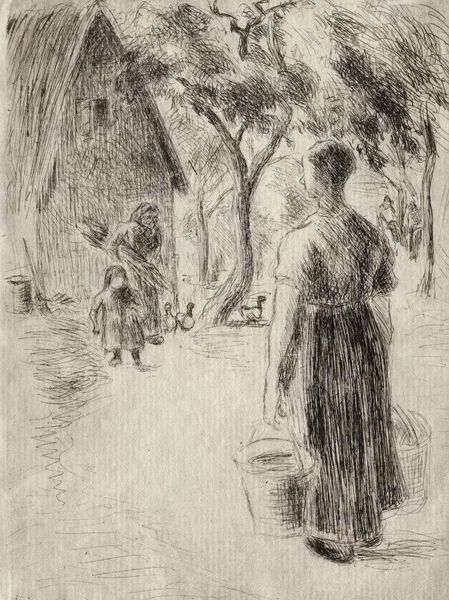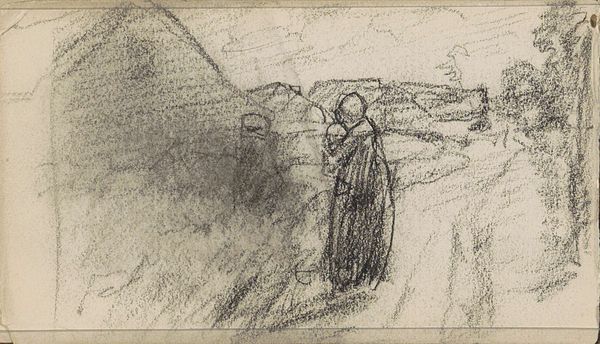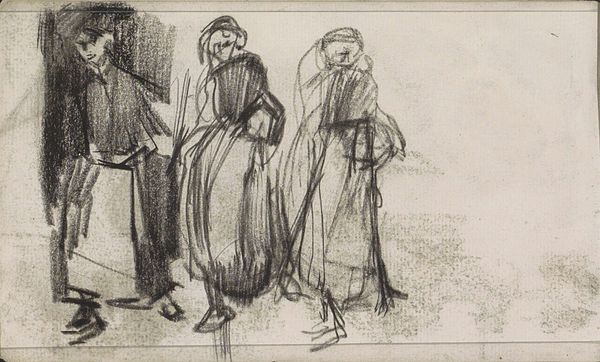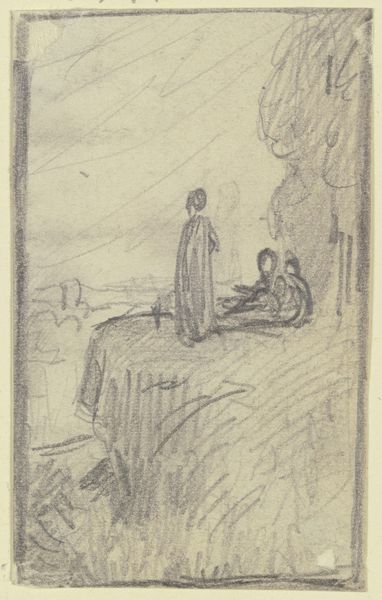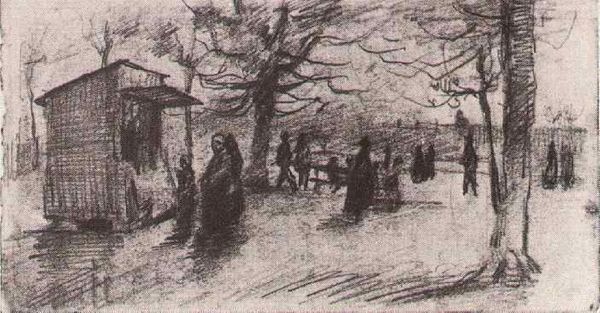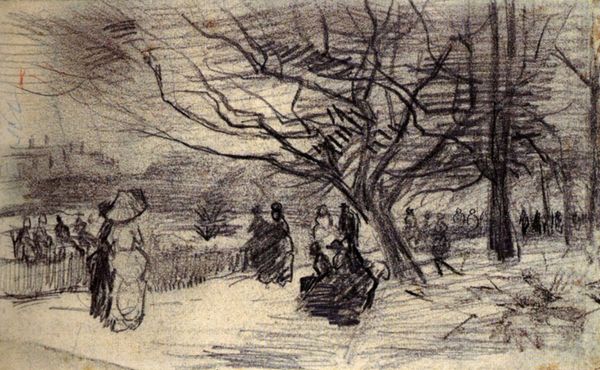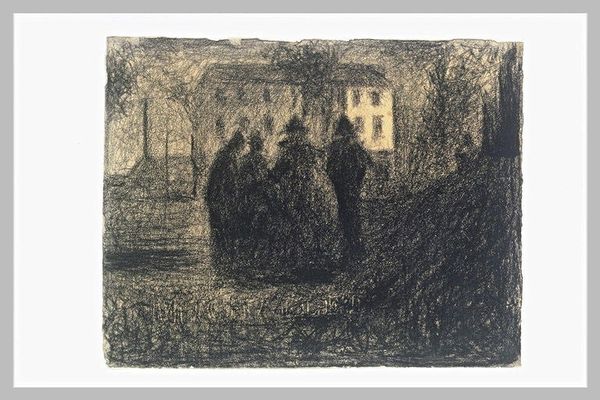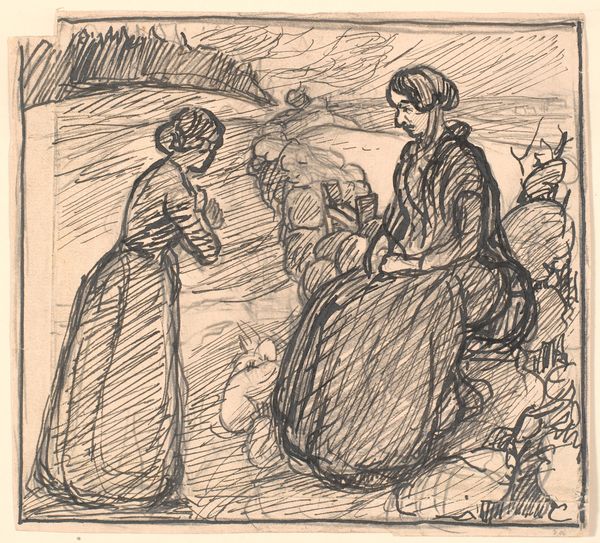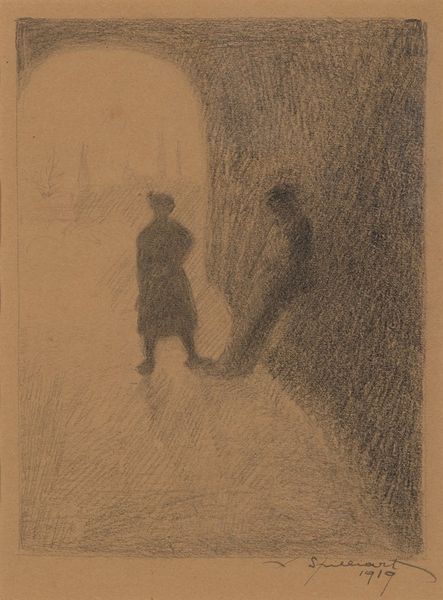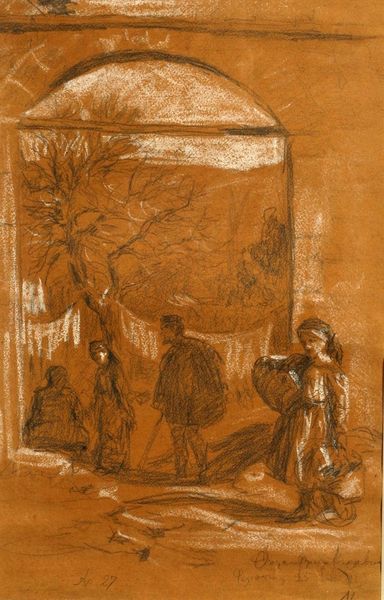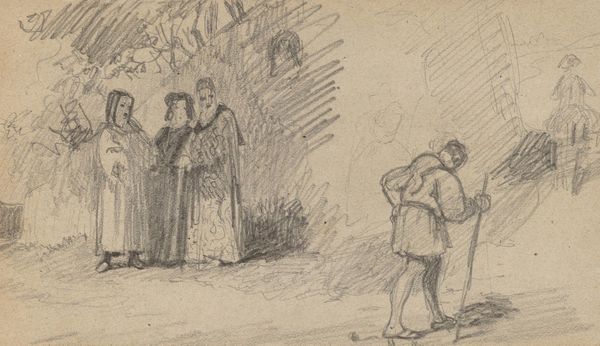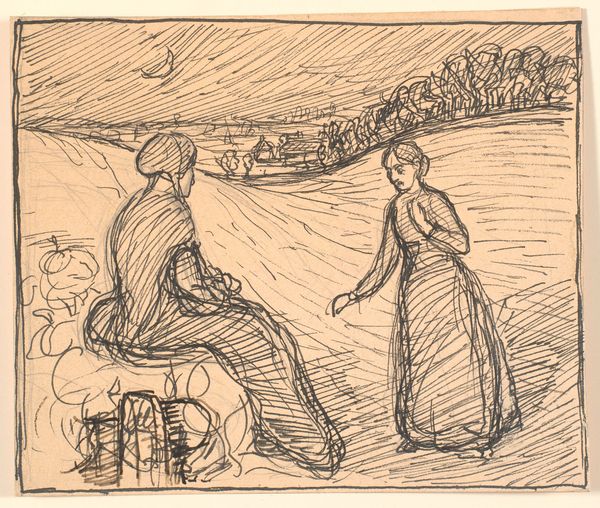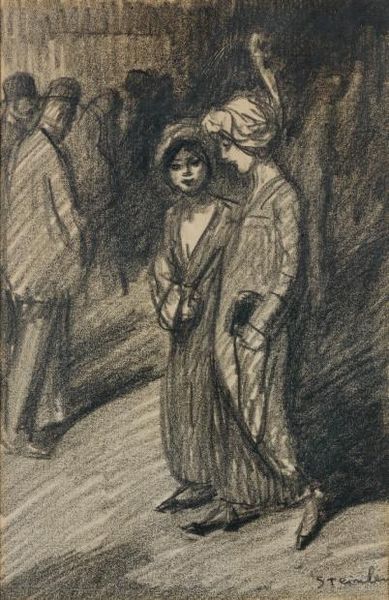
drawing, pencil, charcoal
#
drawing
#
impressionism
#
pencil sketch
#
landscape
#
charcoal drawing
#
figuration
#
pencil drawing
#
pencil
#
charcoal
#
watercolor
Copyright: Public Domain: Artvee
Curator: We’re looking at “Two Women On An Alley Along The Zuiderzee”, a drawing by Max Liebermann. The precise date isn’t known, but it's believed to be from his impressionistic period. Editor: The drawing evokes a feeling of quiet melancholy, doesn’t it? The muted tones and rather indistinct forms certainly set that mood. Curator: Absolutely. Liebermann masterfully uses pencil and charcoal to construct depth and texture. Notice how the composition draws our eye along the alley, receding into the distant horizon. The figures are positioned almost centrally to create a very solid planar composition. Editor: Yes, and how interesting that we, as viewers, are placed behind these women. It implies a sense of shared journey or perhaps a quiet observation of their lives, maybe within the rigid social structures of the late 19th century, women were expected to uphold specific roles? I’m interested in these women and their relationship, why are they out together? What are they seeking on this journey? Curator: It could certainly suggest themes of female companionship, or shared experience, but one could also analyse the mark-making and how it differs in the representation of these women’s dresses as opposed to the path under their feet. Do we see this as commentary or a simple material choice? Editor: Material choices are never "simple", and I believe Liebermann was aware of the symbolism he employed. Think of the setting— the Zuiderzee. A maritime region. Did these women live near the coast, where maritime culture likely imposed distinct social norms that limited their mobility and access? These women may have not enjoyed equality with men. Curator: While that is a pertinent cultural observation, perhaps, as formalism suggests, one should look closer at the interplay between light and shadow. Observe the striking contrast along the alley, and how the use of tonal gradation affects our spatial perception of depth and recession. It is through understanding these pictorial strategies that one can see the technical brilliance. Editor: Indeed, the technical aspects are commendable, but they become richer when viewed through the lens of the social and historical context. The visual elements are interwoven with social implications, such as the realities faced by women within these impressionistic snapshots of life. It deepens the artwork's narrative and makes it so much more compelling for contemporary audiences. Curator: Well, on the surface we have a brilliant pencil sketch employing wonderful techniques and balanced structure. On a deeper level, we could examine the contextual factors impacting on subject choice and reception. Editor: Yes, it's about weaving the visual and the social into a tapestry of understanding.
Comments
No comments
Be the first to comment and join the conversation on the ultimate creative platform.
